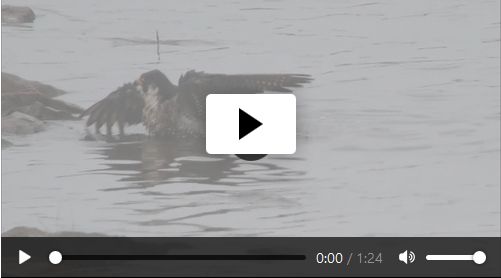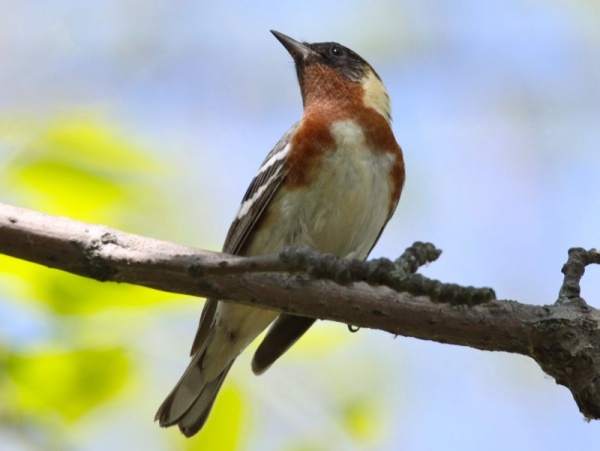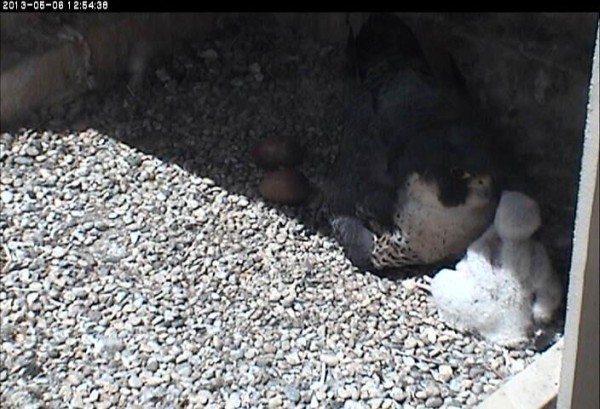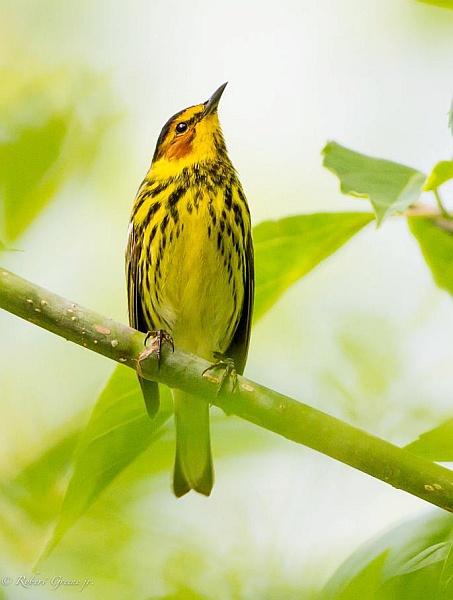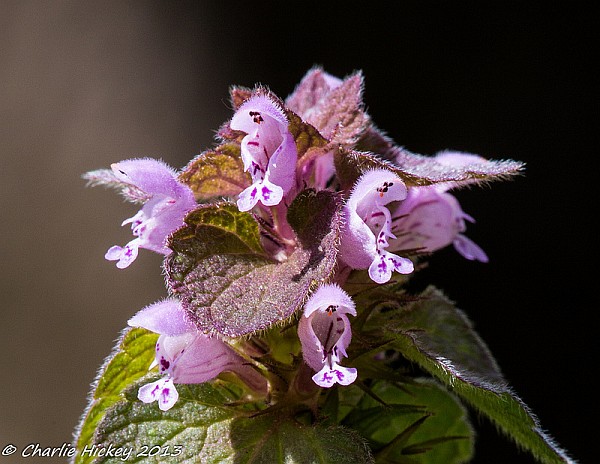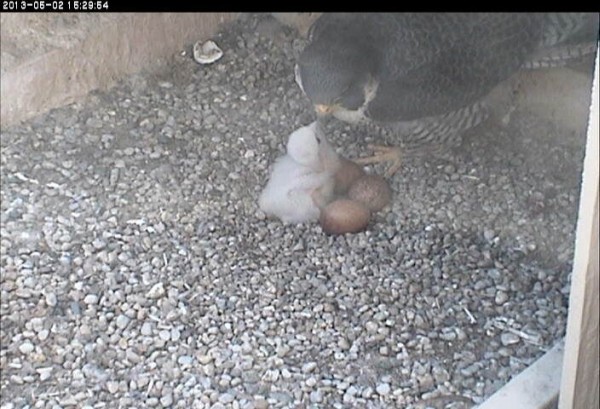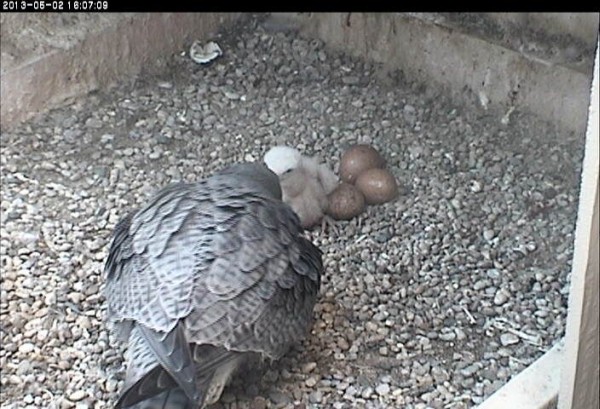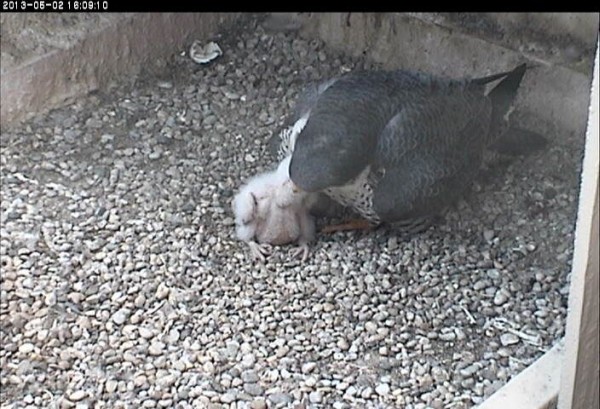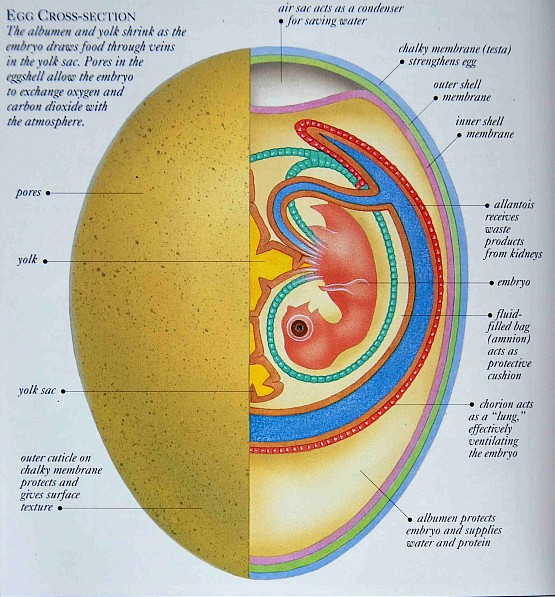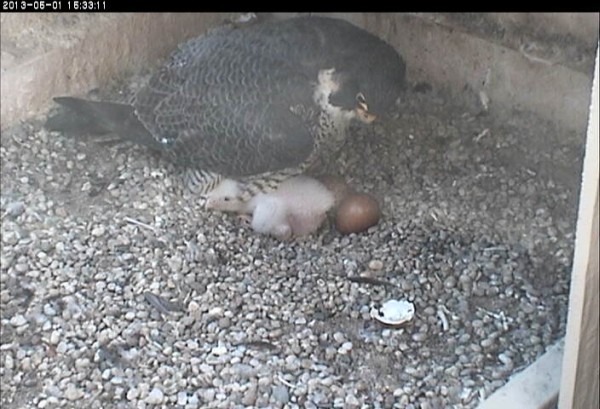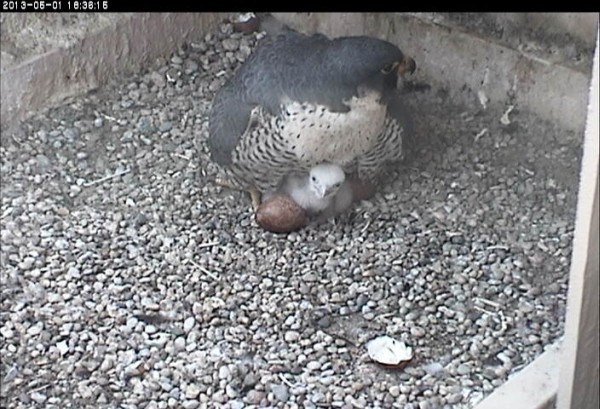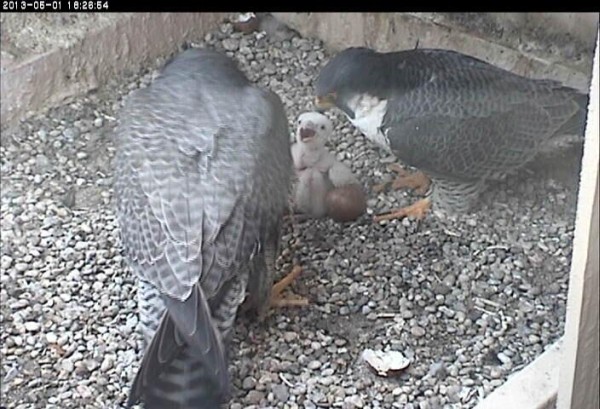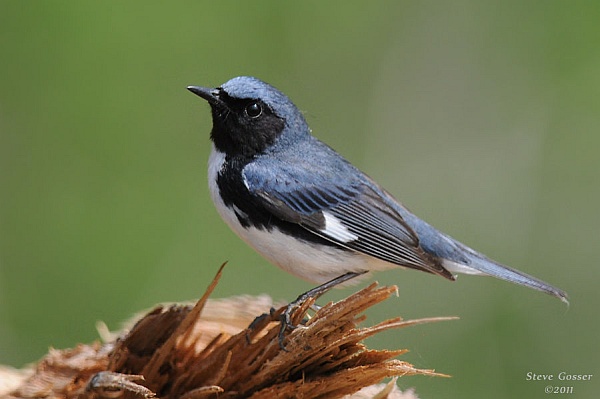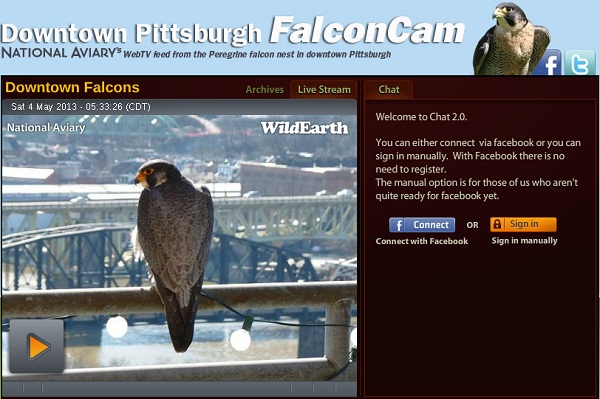
It’s been two years since we’ve seen Pittsburgh’s Downtown peregrine family on camera.
Louie and Dori used to nest at the Gulf Tower where we had a great close-up view of their activities but in 2012 they abandoned Gulf for the back of a building on Fourth Avenue. They’ve nested in the same place this year but I was unsuccessful in finding the proper contact to permit a camera.
It looked like we’d have another year without a view of the Downtown pair until Amanda McGuire came to the rescue. She works for Point Park University and her balcony is Louie and Dori’s favorite perch during the nesting season. I was excited when Amanda said, “I think we can put a webcam on my balcony” so I began a flurry of email to put everyone in touch with each other.
Amanda made all the arrangements with Point Park, Bill Powers of PixController donated his time and equipment, and Point Park University donated the camera location and Internet access. It all came together when Wildearth began streaming and the National Aviary put the Downtown peregrine page on their website.
The webcam is located here on the National Aviary website or by clicking on the image above. That’s Dan Costa’s photo of Dori on the splash-screen.
When you watch the webcam, keep in mind that it’s a block away from the nest so you’re seeing an exterior view without sound and nightlights. Bright sunlight hides the interior space so you’ll find that best viewing is during cloudy days or at dawn and dusk.
The image below shows the nest opening with Louie perched on the left while it rained Monday evening, April 29. Yes, Louie matches the building.
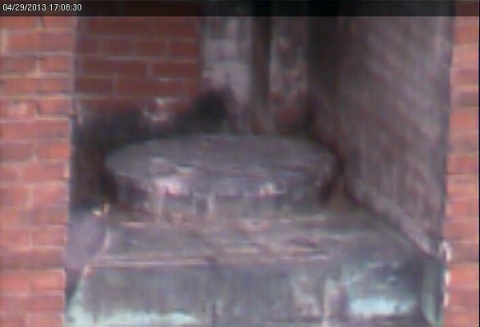
Here’s a marked up snapshot that describes what you’re seeing.
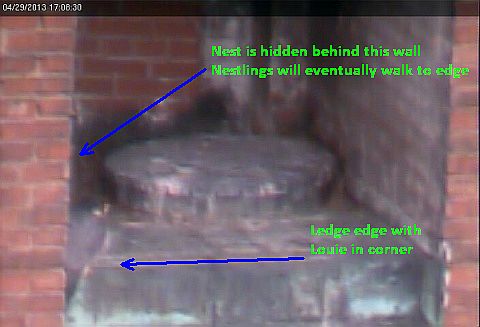
By now Louie and Dori’s chicks are moving around the nest and visible in the back corner. They’re white and fluffy but will turn brown as they grow their juvenile feathers. Fortunately they’ll move to the front of the nest opening as they grow up.
Around June 1 they’ll attempt their first flight and leave the nest, so now’s the time to watch. Click here or on the image at top to see them on the National Aviary website.
(images from the National Aviary’s Downtown Pittsburgh Falconcam)
p.s. Yes, this temporary camera is blurry. We’ll have something better next year.
p.p.s. Pittsburgh Falconuts Facebook group have been watching this cam for several days and have captured snapshots of Dori and Louie in the nest area.
